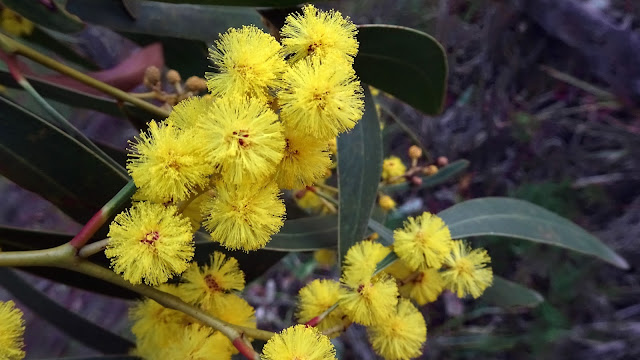Acacia pycnantha, Golden Wattle, is a shrub or small tree about 4 to 8 metres tall. The specific name pycnantha from the Greek 'pyknos', meaning 'dense', and 'anthos', meaning 'a flower', refers to the dense clusters of flowers. In late winter/early spring large fluffy golden-yellow flower-heads with up to eighty minute sweetly scented flowers provide a vivid contrast with the foliage.
Golden Wattle occurs in the understorey of open forest or woodland and in open scrub formations in South Australia, Victoria, New South Wales and the Australian Capital Territory, in temperate regions with mean annual rainfall of 350 mm to 1000 mm. It regenerates freely after fires, which usually kill the parent plants but stimulate the germination of seeds stored in the soil if rain follows soon after.
The brilliant yellow, fragrant flowers of Golden Wattle make it a popular garden plant. It is moderately frost tolerant and grows well in a wide range of soils provided drainage is effective, but tends to be short-lived in cultivation. It is easily propagated from seed soaked in hot water to break the hard seed coat, and the seedlings can be transplanted to pots of soil mix for growing on before planting out in a lightly shaded or open position.
The adoption of the Golden Wattle as the Australian national flower tends to be confirmed by its introduction into the design of the Australian armorial bearings on the recommendation of the Rt Hon. Andrew Fisher, Prime Minister of Australia, when the Commonwealth Armorial Ensigns and Supporters were granted by Royal Warrant on 19 September 1912. Acacia pycnantha enjoyed popular acceptance as Australia's national flower for much of this century but it was not proclaimed as the national floral emblem until 1988, the year of Australia's bicentenary.
This post is part of the Floral Friday Fotos meme.



No comments:
Post a Comment